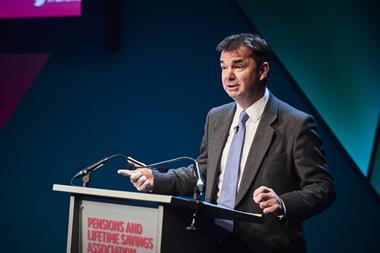Legal & General’s UK defined contribution (DC) master trust has been approved by the country’s Pensions Regulator (TPR) – only the second to have gained authorisation since new rules came into force in October.
All providers of master trusts – multi-employer DC schemes supporting auto-enrolment – had until 31 March to submit their applications for authorisation by TPR.
TPR announced this week that 30 applications had been submitted, with Legal & General’s (L&G) two funds and Willis Towers Watson’s Lifesight scheme the first trusts to be approved so far.
Another 10 master trusts have been granted a six-week extension to the 31 March deadline, including NOW: Pensions, the UK’s third-largest master trust, while a number have decided to exit the market.
Dermot Courtier, chair of the L&G Mastertrust, said: “As one of the first master trusts to be authorised, we are proud to be recognised as part of the industry-wide move towards higher governance, security and better protection for pension scheme members.”
The L&G master trust had 830,000 members and £5.7bn (€6.7bn) in assets at the end of December 2018.
The authorisation regime was designed to ensure all providers have strong governance arrangements, appropriate systems and processes, and robust finances.
Nicola Parish, executive director of frontline regulation at TPR, said: “Passing the end of the application window is an important step towards a market of authorised master trusts which millions of pension savers can have confidence in.
“We will now work to assess this large volume of applications and we are confident that we will process these applications within the timeframes laid out in law. We always expected there to be a peak in applications and have planned accordingly.”
Mark Futcher, partner at Barnett Waddingham, said: “The providers have been much slower to apply for authorisation than the market expected but, it is right that the authorisation process is robust.
“To this end, the interesting news will be those providers who fail the authorisation process – this will inform where the bar has been set. We do expect some large casualties.”
Sharon Bellingham, senior consultant at Hymans Robertson, added: “We should also consider that market exits and consolidation activity will be subject to TPR scrutiny and oversight throughout; detailed implementation plans must be agreed ahead of execution and activity will be subject to ongoing monitoring in order to ensure everything remains on the right track.
“This time has potential to be unsettling for members and employers alike and it’s therefore important that the industry avoids scaremongering and suggestions that we’re on the brink of a ‘pension Armageddon’.
“Participating employers and members are not being abandoned and they are not expected to navigate their own way through. Equally, they are not shackled to the trustee default arrangement and are indeed free to make alternative arrangements should they wish.”
The minimum contribution rates for auto-enrolment schemes are due to increase on 6 April. From this date, staff must pay at least 5% of salary, up from 3%, while employers must contribute at least 3%, up from 2%.












No comments yet